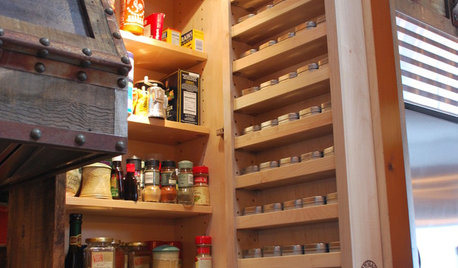Should I invest in a Biscuit Joiner?
avadoone
13 years ago
Related Stories

FEEL-GOOD HOME12 Very Useful Things I've Learned From Designers
These simple ideas can make life at home more efficient and enjoyable
Full Story
ARTA Beginner’s Guide to Original Art and Limited-Edition Prints
Get the basics on investing in art for your home
Full Story
REMODELING GUIDESHouzz Survey Results: Remodeling Likely to Trump Selling in 2014
Most homeowners say they’re staying put for now, and investing in features to help them live better and love their homes more
Full Story
PETSSo You're Thinking About Getting a Dog
Prepare yourself for the realities of training, cost and the impact that lovable pooch might have on your house
Full Story
PETSHow to Help Your Dog Be a Good Neighbor
Good fences certainly help, but be sure to introduce your pup to the neighbors and check in from time to time
Full Story
KITCHEN DESIGN7 Steps to Pantry Perfection
Learn from one homeowner’s plan to reorganize her pantry for real life
Full Story
FURNITURE12 Sofa Colors That Won't Box You In
With any of these colors as a base, you can change your decor as often as you change your mind
Full Story
CITY GUIDESHouzz Travel Guide: Atlanta for Design Lovers
You'll find world-class museums, restaurants, hotels and shops in Georgia's woodsy, welcoming and charming capital
Full Story
FEEL-GOOD HOME21 Ways to Waste Less at Home
Whether it's herbs rotting in the fridge or clothes that never get worn, most of us waste too much. Here are ways to make a change
Full Story
BATHTUBS10 Dreamy Bathtubs for the Ultimate Soak
Bathing areas with cozy fireplaces, eye-catching tile and outdoor views help you luxuriate in style
Full Story









avadooneOriginal Author
bobismyuncle
Related Professionals
Rowland Heights Cabinets & Cabinetry · Wyckoff Cabinets & Cabinetry · Fitchburg Carpenters · Round Rock Carpenters · Deerfield Beach Flooring Contractors · Glendale Flooring Contractors · Monroe Flooring Contractors · Ossining Flooring Contractors · Palm Harbor Flooring Contractors · Poughkeepsie Flooring Contractors · Winter Park Flooring Contractors · Bend Furniture & Accessories · Fort Carson Furniture & Accessories · Palmetto Bay Furniture & Accessories · Arlington Handymanmike_kaiser_gw
bobismyuncle
User
Karen99123
avadooneOriginal Author
brickeyee
brickeyee
Karen99123
aidan_m
brickeyee
User
TheoryOfGravity
loose_screw
bobismyuncle